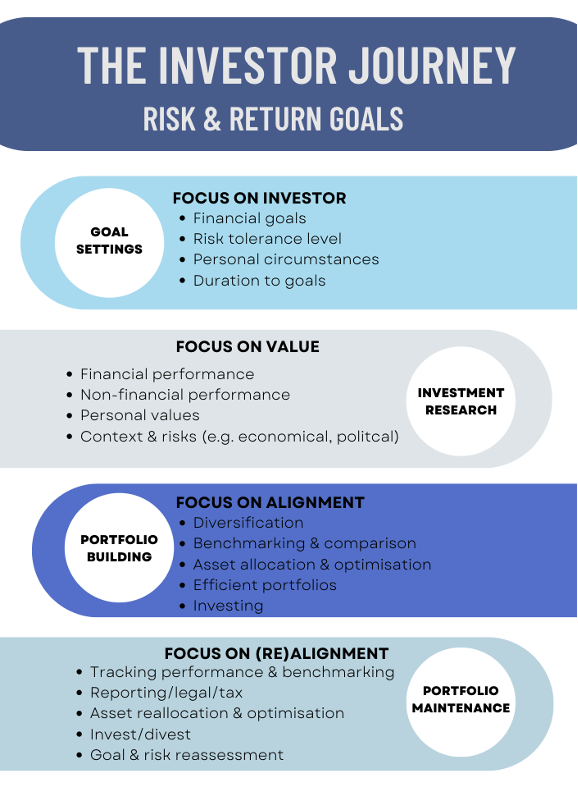
From biotechnology and astronomy, to engineering and marketing, all industries are using modern technology that is rapidly becoming more and more advanced. Businesses are required to keep pace with swift technological changes to maintain competitive advantage and create positive consumer outcomes.
Finance and banking are two areas where human interaction and trust have always played an important role. Simultaneously, advances in technology on a global scale have been extremely pervasive and threatened these elements of service provision.
This article will highlight some of the current technology and innovation in finance and banking, including wealth management technology (WealthTech) along with challenges that need to be addressed.
The three main areas that encompass technological advances in finance and banking include:
- Customer focused innovation
- Intra and Inter-organisational innovation
- Regulatory focused innovation
Customer focused innovation
Although there are many areas of technological advancement on the consumer side, the key areas for consumer technological innovation are in mobility, flexibility and affordability.
For example, Buy Now Pay Later (BNPL) offerings like AfterPay and Klarna, were introduced to the market and assisted consumers to solve their cash availability problems. In doing so, they also provided a flexible and easy to use mobile app, growing their reach exponentially.
Another advancement is the market proliferation of mobile banking. It has become the go-to method for users to make deposits, bank transfers, and monitor spendings and earnings. Nearly 80% of respondents of a survey run by Insider Intelligence say it is the primary way they access their bank account.
Cryptocurrencies have also been hyped for the potential to improve customer outcomes by increasing financial inclusion and simplifying existing financial-services infrastructure. To date, however, the high profile of cryptocurrencies is more attributable from its status as a potential store of value than as a means of financial exchange. That disconnect is now evolving rapidly with both monetary authorities (including the Reserve Bank of Australia) and private institutions looking to issue stabilised cryptocurrencies as viable, mainstream payments vehicles (digital currencies).
Advances in customer focused innovation can provide higher quality and more efficient goods and services, enabling a higher standard of living for consumers.
Intra and Inter-organisational innovation
From an Intra and Inter-organisational innovation perspective, technology and innovation is mainly centered around data, analytics and interconnectivity.
At many institutions, standard practices now include omnichannel engagement (that is, streamlining interactions across multiple customer touch points in a unified way), API usage to support real-time information exchange, and big data analytics to improve different financial processes. Current processes that can be enhanced by big data analytics include credit assessments, evaluation of product usage, and the identification of opportunities to improve client relationships.
A big focus in the banking and finance industry is on dealing with challenges brought about by increased digitalisation and interconnectivity. These challenges include the areas of cyber security, fraud detection and anti-money laundering which use a variety of machine learning models over vast amounts of data, to detect unusual patterns and outliers from normal transactions and to prevent potential large and potentially image-damaging losses.
Innovation in this space ensures processes and people in an intra and inter-organisational context are connected, enhanced and engaged to use technology to address ongoing challenges.
Regulatory focused innovation
Most innovation within the regulatory space in banking and finance revolves around enablement. This has included the creation of a framework for open data sharing, Consumer Data Rights act, and the digitisation of various governmental reporting obligations. These mechanisms will assist to streamline regulatory business operations for organisations moving forward.
Industry views
Top research houses including Deloitte, Gartner and Insider Intelligence all highlight technology trends in banking and finance with a common AI thematic.
Machine Learning is enabling banks to increase the speed of data-analytics resulting in near real time processing of large amounts of data. This allows organisations to discover patterns, identify anomalies, generate insights, make decisions, and move towards automated decision making.
Generative AI enables new images, text, or code to be created from learning algorithms and can be applied to business growth areas including trading predictions, risk factor modeling and fraud detection.
Insider Intelligence also found that AI technologies, along with blockchain and IoT will have the greatest impact on banking by 2025. Organisations that are able to capture the most value and opportunity moving forward will be engaging with these trends and innovating now.
Wealth management, WealthTech and Diversiview
WealthTech is a subset of FinTech relating to the use of innovative technologies to facilitate the process of wealth management for investors. To illustrate the investor journey, we mapped it from the beginning to end, shown in the infographic below:

We identified that technological advances and innovation have been concentrated in the areas of investment research and portfolio building, especially concerning the operational aspects of the provision of services like buying and selling equities, and mobility of apps.
There is a distinct lack of tools available to calculate portfolio volatility and optimal diversification to enable investors to make informed decisions and manage wealth effectively. For this reason, we created Diversiview. Our software supports investors with portfolio construction, diversification and optimisation during the portfolio maintenance and building investor journey highlighted above.
Diversiview uses state of the art operational research and optimisation techniques. It also encompasses Nobel-prize winning financial research from Harry Markowitz and shows users the risk-return profile of their portfolio in their selected asset allocation. Diversiview allows users to calculate millions of other potential positions for their portfolio, to help the user move to the most efficient portfolio position that is optimised for their own risk tolerance and preferences.
The Diversiview platform provides innovative customer focused outcomes using the latest digitalisation, standardisation and data analytic techniques by enabling its users fast, easy and affordable access to investment performance data and insights.
What’s next in WealthTech?
WealthTech is transforming how organisations, wealth managers and consumers approach wealth management. It provides the opportunity to intersect technology and accessibility to drive better and more transparent outcomes for consumers. Although there are challenges related to regulation, cyber security and trust to be addressed, there is space for an overhaul of current legacy systems and technology enhancement to help both investors and organisations achieve positive, profitable results.
A few areas we see growing in the AI space in the banking and finance industry are in Integrated Data Access and context driven scenarios and alerting. Voice trading is another up-and-coming area allowing investors to invest on the go, and damage minimiser AI tools enable investors to be alerted about market movements that could negatively impact their portfolio goals in a timely manner.
Things are changing rapidly, and data shows a high percentage of affluent investors and those under the age of 40 prefer to do business with investment firms that use online collaboration and digital tools. Therefore, wealth management firms that are able (and willing!) to embrace new, innovative fintech tools—while simultaneously helping investors navigate an increasingly complex financial landscape—will be more likely to grow and thrive.
Questions?
Please contact the team at hello@diversiview.online and we will be happy to help.
